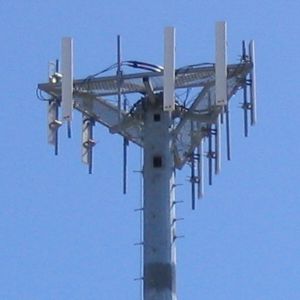Background
Last week, I spoke at the Swiss Mobile Association. The event was held at one of the oldest cross-functional research institutes Gottlieb Duttweiler Institute just outside Zurich. Prior to being involved in IoT and AI, I worked for many years in Telecoms. So, this was a nice time to catch up with a few ideas for AI for Telecoms
I believe that from an innovation standpoint – we are living in a post-mobile world.
What does this mean?
Today, just as the Web itself, Mobile is a mature industry. Mobile has become a platform to build future innovations. Internet of Things is one such innovation but there are many more. We are now seeing the rise of IoT, Blockchain, Industrial Internet, Autonomous vehicles, Virtual Reality, Drones, Augmented Reality, The sharing economy and others. All these are platforms in their own right. They may use Mobile but only as an app.
In all these cases, the connectivity, customer engagement and most importantly the Data fall outside the remit of Telecoms.
Take the case of Uber. Is Uber a Web Company? Is Uber a Mobile company? Or Is Uber an AI company?
It gets more complex. Elon Musk launches Neuralink, a venture to merge the human brain with AI. Is there an app for that? Maybe .. But does it matter?
Today, the value has shifted to AI. AI is based on Deep Learning algorithms. Deep Learning involves automatic feature detection from data. AI techniques can be applied to a range of Data types including: Images and sound (CNNs), Transactional data, Sequences (LSTMs), Text (Natural Language Processing) and learning new Behaviour and learning to behave autonomously (Reinforcement learning).
It is against this backdrop that we look at AI for Telecoms in two aspects:
a) Impact on the Operator /Carrier and
b) Impact on devices
Impact on the Operator
AI will impact almost every aspect over the next two decades and Telecoms is no exception. However, to get the full benefits of AI, Operators will have to upgrade their networks to Software Defined Networks(SDN)s leading to Network virtualization and the deployment of greater Cloud based services. This will in turn fulfil the wider vision as discussed in the AT&T Domain 2.0 documents(pdf) which is based on autonomous action. Take the case of support(a major cost for Telecoms). Historically, we find a problem, analyse it and create a support ticket. The problem can then be solved by someone else who is allocated the support ticket. With AI, AI can identify the problem and then take action autonomously based on some policy. Further, AI can predict when the system may fail and take action within a certain policy framework.
Why does Telecoms need AI now?
IoT and other technologies will create a very large number of endpoints for Telecoms. With 5G, the nature of the network with change(high density urban deployments etc). All this will create a large number of patterns which are not easy to manage for humans. However, because AI is self-learning AI can manage these patterns.
This impacts a number of areas in Telecoms including: Traffic Classification (Flow identification, Security (DDoS detection/mitigation), QoE); Resource utilization and Network optimization, Anomaly detection(Fault management, health indicators); Prediction(Risk management, capacity planning); Network Orchestration (Adapted from: David Meyer Brocade)
Finally, One more point to note. Without the network upgrades as above and considering that 5G is still in the future(beyond 2020 at least), the deployment of technologies like Narrowband IoT offer the best chance for Telecoms Operators to engage with the expanding world of IoT. Currently, the impact of IoT is largely abstracted from the Telecoms network – but is expected to be forthcoming soon with network upgrades.
Impact on Devices
On the other hand, mobile devices have a different set of problems addressed by AI. In this case the Virtual assistants / Bots play an important part. For example, the Samsung Galaxy S8 ships with Bixby, a new virtual assistant that Samsung promises will one day let you control every single feature and app with just your voice. You talk to your phone and your phone talks back. All these voice technologies need Natural Language Processing(AI)
You can also ‘talk’ to the sensors in your car though Alexa. Ford, Volkswagen, Hyundai and Volvo have all announced Alexa integration. AI can play a role in Cybersecurity – for example – How AI can ‘change the locks’ in cybersecurity. As early as 2015, Qualcomm provided image recognition features using AI . It is also possible to use the Mobile device as a gateway for many Machine Learning/Deep Learning applications especially IoT(ex Wearables)
Conclusion: Data is the next Oil – but that Oil is named Artificial Intelligence
We are heading to a Post Mobile World. But there is more. It is often said in the mobile industry: “Data is the new Oil”. I have always been uncomfortable with this term “Data is the new Oil”
Partly because Data is abundant .. and things which are abundant normally do not have a high monetary value. Now, value is shifting to other platforms Automotive etc . AI and IoT are the key drivers of value since they both monetize data and create a value proposition (Barriers to Entry).
So, I believe that : Data is the next Oil – but that Oil is named Artificial Intelligence
Like any industry, Telecoms can leverage the power of AI. But the most valuable resource in this world is not the Data but the People – who will leverage the AI.
This blog is based on my teaching. I teach a course on Implementing Enterprise AI and also teach Data Science for IoT at the University of Oxford. I am also a Principal Data Scientist for a fintech firm based in London responsible for creating AI engines for fraud detection.
Image source: Wikipedia By David Jordan, CC BY-SA 3.0,

